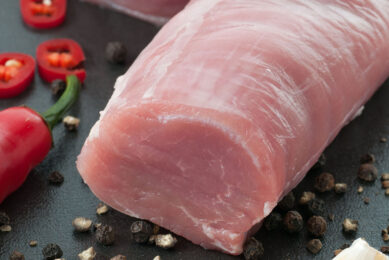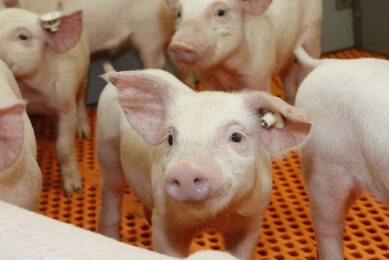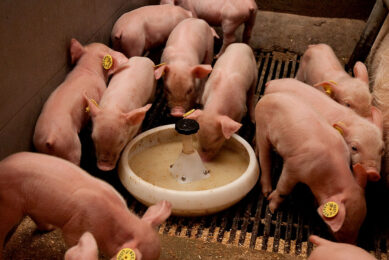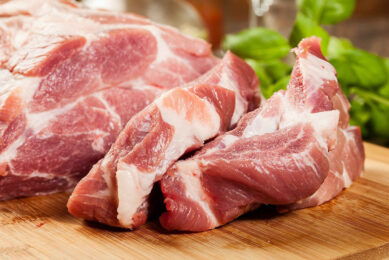How histidine can influence meat quality
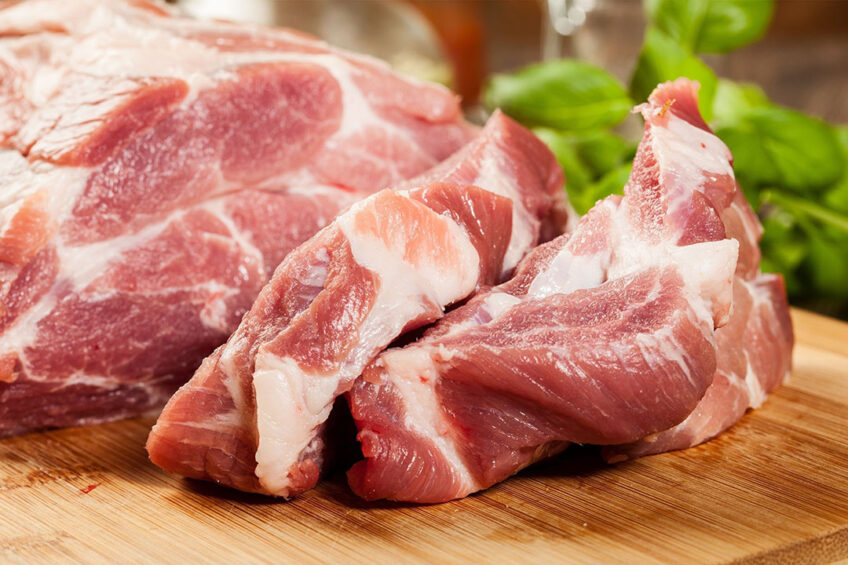
Research shows that L-histidine can improve carnosine content and positively influence meat quality traits.
Defining a uniform definition of meat quality is complex and largely depends on the economic situation of specific areas. In certain parts of the world, safe and hygienic meat is perceived as high quality. Moving to the other end of the spectrum, meat originating from animals being bred in specific welfare conditions, fed specific ingredients or which improves human health is perceived as high quality. Nevertheless, within these two extremes, the technical determination: pH, water holding capacity (drip loss), intramuscular fat, colour, etc. offers the ability to estimate fresh meat quality with a certain uniformity across regions. In this article, meat quality refers to the technical parameters of meat.
Influencing meat quality
Meat quality can be affected by a multitude of parameters in all parts of the chain: breed, farm, feed, transport, slaughter, storage, etc. When focussing on feed, specific ingredients have been tested and are used to increase meat quality. A well-known example is vitamin E, widely used for its antioxidative capacity. In contrast, amino acid supplementation as meat quality enhancer is far less known as its utilisation in current feed formulation is mainly connected to the ideal protein concept ensuring optimal muscle build up or growth. But did you know amino acids in general and more specifically histidine (His) can influence meat quality?
Histidine, a versatile essential amino acid
As essential amino acid in swine, and recently made available in unbound form, the addition of L-His offers nutritionist the ability to further reduce crude protein level of their feeds without affecting performance. Though, the functional roles of His are not minor: firstly, it is an important component of haemoglobin, responsible for oxygen/carbon dioxide transport in the body. Secondly, it is a precursor of histamine, involved in inflammatory processes and in the stimulation of the parietal cells to produce hydrochloric acid (HCl) in the stomach. HCl is needed to create a bacteriostatic effect and is important for the first step of protein digestion in which it activates the proenzyme pepsinogen to the proteolytic enzyme pepsin. Linked to meat quality, we need to look to the third important function of His. L-His forms together with beta-alanine the so-called histidine containing dipeptides (HCD). This group of dipeptides consists out of carnosine and its methylated forms anserine and balenine (ophidine). Depending on animal species, one or more HCD can be found back in the muscle tissue (Figure 1).
Figure 1- HCD Concentration [g/kg wet muscle] of farm animals in comparison to humans. Modified from Boldyrev et al. 2013.
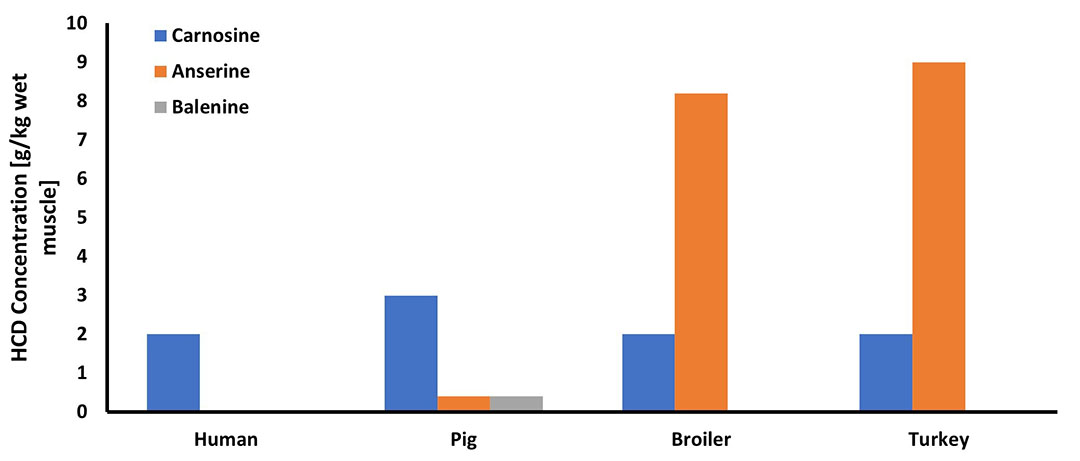
Within a specie HCD level can vary depending on breed, sex, age etc. Pigs own the 3 HCD, whilst broiler and turkeys contain higher amounts of HCD and the abundance of anserine is higher. Humans on the other hand have low HCD concentrations and solely composed out of carnosine. Derived from the Latin ‘carne’ or meat, the first discoveries of carnosine were done in skeletal muscle and this seems to be the major place of carnosine production, storage and release. Although the discovery of carnosine was made over 100 years ago, full functionalities and how to influence its production in swine remain largely to be elucidated. On top, current feeding practices are mainly focussed on ingredients of plant-based origin, not containing any HCD. Reducing the amount of HCD entering the body through feed and relying on the animal’s own capacity to produce HCD’s could be hampered and could increase the need for its basic component’s histidine & beta-alanine.
Carnosine as meat quality enhancer
The interest of looking closer to carnosine as potential meat quality influencer is linked to its functionality as a pH buffer in the skeletal muscle. On top, there is accumulated evidence that carnosine act as an antioxidant under physiological conditions as well as in models of induced oxidative damage. Next to this, commercially important parts of the pig carcass: the loin and ham contain high levels of carnosine, therefore increasing interest whether extra carnosine could improve meat quality in these valuable parts. Literature indicates that supplementation of pure carnosine to finishing pigs showed positive effects on meat quality parameters such as decreased drip loss, improved colour and antioxidative capacity. Supplementing L-His to increase carnosine and meat quality in broilers has been described in literature. In swine however, literature on the effects of supplementing L-His on carnosine and meat quality is scarce. Hence, a recent trial was conducted to evaluate the effects of L-His supplementation on a large group of commercially housed finishing pigs on the carnosine concentration and its influence on meat quality in loin and ham. The results show promising effects: a significant increase in the carnosine content and a numerically increased carnosine content in the ham (+9%) were observed. Meat quality parameters such as drip loss and pH showed a significant positive evolution.
Benefit of supplementing L-histidine
Following the ideal protein concept, amino acid requirements are linked mainly to performance. However, even though some amino acids such as histidine might be at first glance not limiting for performance in fattening swine in current formulation practice, they could be limiting for other functionalities in the body, such as meat quality. Overall, the above findings show the potential benefit of supplementing L-histidine to improve carnosine content and consequently influence positively meat quality traits of economical important carcass parts.
References on request.



